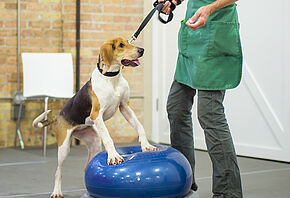Separation Anxiety Solutions
Is your dog experiencing fear or anxiety when left alone? This class offers solutions that work for this challenging condition. A small class size allows your instructor to monitor your progress as you learn to help your dog feel more comfortable and secure when home alone.
What You'll Learn
- How to define separation anxiety and how to build a foundation for an individual plan.
- Understanding your dog’s body language and learning to recognize stress vs. relaxation.
- Learn to identify and desensitize your dog to pre-departure cues.
- How to take the next steps of adding distractions, duration, and distance. Learn to become proficient by adding small approximations to departure times to help your dog feel comfortable and secure.
- When it is time to discuss your progress with your veterinarian.
- Generalizing relaxation behaviors throughout your household.
The Basics
- Number of Classes: 5 live 50-minute classes. Classes will meet on the same day/time each week.
- Length of Class: 50 minutes
- Class Structure: Training Via Zoom. Additional support from your instructor available throughout the course via email and Excel spreadsheet documentation.
- Age: All ages
- Prerequisites: None
- If your dog is showing anxiety or discomfort when left alone, it may be important to suspend departures as you work through your training protocol. Strategies for success will be discussed during our first meeting. Consider support from family, friends, dog-walker, or pet-sitting services.
Supplies
A registered account with Zoom. *You only need to be registered; you do not need a paid subscription
Schedule
Week 1
- Exploring Separation anxiety behaviors
- Truths vs. Myths
- Time Frames and Expectations
- Body language signs of FAS (fear, anxiety, stress)
- Suspending absences. Who can help?
Week 2
- Terminology – Subjective vs. Objective and other important terms
- Technology – Setting up equipment to monitor absences
- Identifying pre-departure cues
- Conducting a baseline assessment
Week 3
- Separating Pre-departure cues from absences
- Determining thresholds
- Setting target duration
- Tracking progress
Week 4
- Identifying training scenarios outside of missions
- Appropriate confidence building exercises
- Handling regressions
- Exceptional situations
Week 5
- Determining when to move forward, stay the same or go back to last successful duration
- Toggling pre-departure cues with absences
- Assessing progress and how to create future missions
- Wrapping it up with next steps for success



